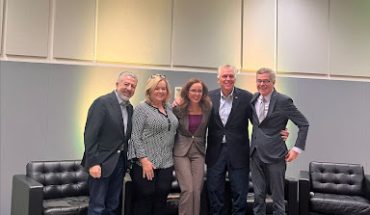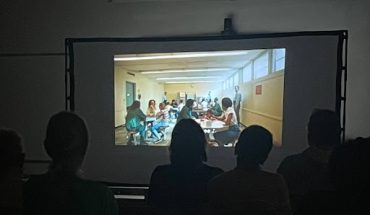The JC Cinema comfortably seats 294 students. The large crowd for the screening and public discussion of “Dear White People,” occupied every available inch of the room in the theater.
“As a black student, I was interested in seeing this film because I wanted to see how the filmmaker tackled the topic of race but also wanted to see if the film was going to be just one sided,” senior Briana Haygood, a psychology major, said.
“Dear White People” focuses on four students who must deal with being a black face in a white world. Activist Samantha White, the protagonist in the film, brings attention to the unjust housing system at the college through her words and her art as a filmmaker.
The film touches on many pop culture references while at the same time using historical references.
“I really loved this film. It reminded me a lot of ‘Do the Right Thing’ which also created a lot of stir when it came out in ’89 and I think that the broad strokes that the film makes in terms of characterization and situation is a little bit large and helps to generate the conversation,” Cynthia Fuchs, director of Film and Media Studies, said.
Before the film began, many students believed this film would focus solely on race and educating white people.
“Race is part of the film but it makes race more complex then what people think it is. There’s different types of characters that represents different intersections of race and people. The film showcases a more complex picture that a lot of other movies haven’t been able to do,” Cristina Lee, student liaison for African and African American Studies, said.
As the movie proceeds, issues with identity and relationships come to the surface. Sam struggled with her racial identity which affected her relationship with her white boyfriend. Another character, Lionel Higgins, does not fit in with the white students yet was scared of the black students.
“I think too often the conversation doesn’t happen and so there’s all this tension and people go into their corners and don’t talk to each other however, this film is a great provocation to get the talking started,” Fuchs said. “Young people are ready to engage in the conversation, look at all the things that happened after Ferguson, much of the energy has come from young people who are at a place now where they feel like there needs to be some change.”
The discussion following the film struck up debate about the perpetuation of racism by both white and black persons. This prompted students to share personal stories about their own experiences with racism.
“This film is not just a monolith of one large group of people talking to another large group of people. It makes fun of the black students and the stereotypes they embody as much as it makes fun of the other races but in a different way. It’s opening up doors more than its closing them and if you only think of it as making fun of somebody then that’s closing doors and this film isn’t doing that,” Fuchs said.
Ultimately, the discussion came down to that these issues are a societal problem.
“Dealing with the type of racism were there’s racial undertones instead of being blatant racism is something I think is very crucial to this generation because we all experience it in one shape or form,” Lee said.



